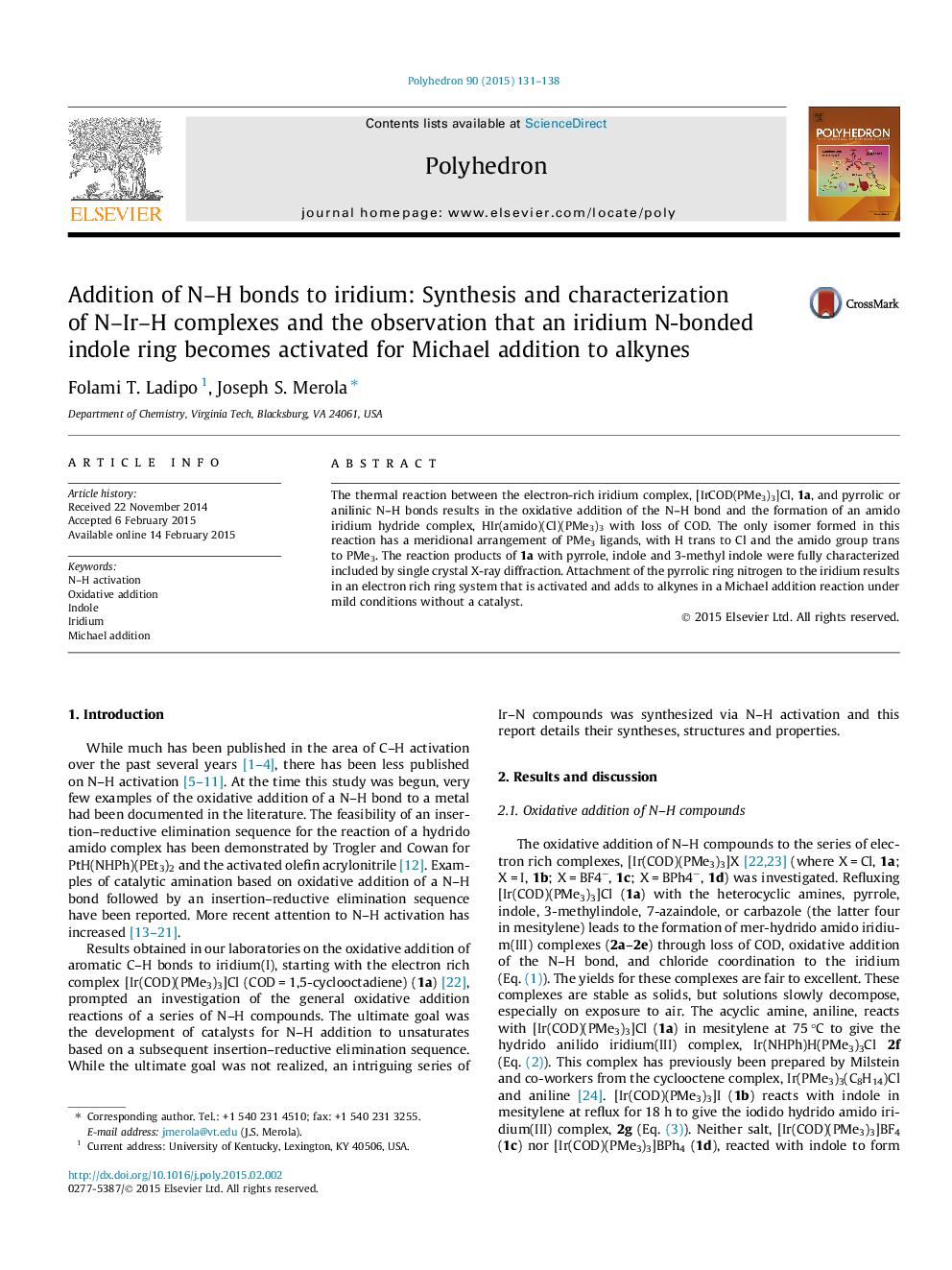| کد مقاله | کد نشریه | سال انتشار | مقاله انگلیسی | نسخه تمام متن |
|---|---|---|---|---|
| 1336135 | 1500249 | 2015 | 8 صفحه PDF | دانلود رایگان |

The thermal reaction between the electron-rich iridium complex, [IrCOD(PMe3)3]Cl, 1a, and pyrrolic or anilinic N–H bonds results in the oxidative addition of the N–H bond and the formation of an amido iridium hydride complex, HIr(amido)(Cl)(PMe3)3 with loss of COD. The only isomer formed in this reaction has a meridional arrangement of PMe3 ligands, with H trans to Cl and the amido group trans to PMe3. The reaction products of 1a with pyrrole, indole and 3-methyl indole were fully characterized included by single crystal X-ray diffraction. Attachment of the pyrrolic ring nitrogen to the iridium results in an electron rich ring system that is activated and adds to alkynes in a Michael addition reaction under mild conditions without a catalyst.
[IrCOD(PMe3)3]Cl undergoes a facile oxidative addition reaction of pyrrolic N–H bonds to give N-bonded iridium hydride complexes. In the specific case of indole, the resulting Ir–N bonded indole ring becomes very electron rich and activated toward Michael addition reactions to alkynes.Figure optionsDownload as PowerPoint slide
Journal: Polyhedron - Volume 90, 18 April 2015, Pages 131–138